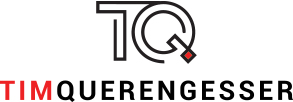I drove today. And I did so to push for investment in transit in Edmonton.
Allow me to explain.
For years, I’ve lived by the idea that to be part of the solution means to you have to live like it. Fittingly, I have not personally owned an automobile to drive to work since 2009, though my wife and I share her older Kia now to get groceries and visit people in far-off suburbs.
My trip to work and how much it costs my city and province. Today I will cost nearly $27, rather than $10 or, were I to bike, $0.24. Source: City of Calgary calculator. Link in blog.
I’ve experienced many frustrations doing this. My last company job offered me monthly subsidies for car parking but would not cover my car-share and transit trips. This is common in Edmonton. For shame. I’ve also nearly died way too many times in a crosswalk or on a bicycle. Still, my thinking has been that I would like to push back on the idea that “no one bikes” or “nobody who can afford not to use transit will use transit” by being the guy who does just that. The happy side effects are I meet great people, either on my bike or on transit. And I’m happier.
And there are many, many people like me in Edmonton and Alberta.
So why would I drive a vehicle to work today and think that this will push my city and province to re-invest in transit? Because I’m going to stop saving my city and province money. I’m calling the bluff.
Each time I choose active transportation for my work commute, which is roughly six kilometres, I save Edmonton and Alberta coffers between $5 to $13. (You can calculate your own commute here.)
My thinking in protesting through driving is this: If more of us who want usable transit and have the means to a vehicle choose that vehicle, we force the inevitable. We beat our roads into needing more frequent and costly maintenance. We accelerate all the myriad, unsustainable costs. We pressure a system that’s pretending sprawl development is sustainable by allowing it to break just that much more quickly.
And then, once it’s broken, once property tax hikes are proposed in double digits or a drive from the edge of the city’s edge to its downtown takes 90 minutes because of clogged arteries, we will talk honestly and rationally about investments in transit.
I can hear the criticisms to this — that I’m just virtue signalling while opting for a car, or that driving won’t achieve what I’m after.
My response is that I’ve been choosing the sustainable option, repeatedly, over the past few years and showing up to committee and council meetings to push for investments in these things, but to what end? It’s not making my leaders invest in my transit system, is it? As we’ve seen recently, we’re getting the exact opposite. On the flip side, I’m being incentivized to drive, through free on-street parking and zero added cost to access the road network.
The other criticism is that I will only accelerate further political and monetary responses to car demand by becoming part of that demand. I accept that and do worry about it. But I think this problem boils down to dollars. If all of us who try to move around in our city more sustainably chose, instead, to max out our demands on the public purse and its systems more often, that already stretched system might just hit a breaking point that leaders could not ignore.
That might prompt the reckoning we need. Transit and rational land-use might, then, finally, seem the only way to survive.
I’m happy to hear feedback on this.

